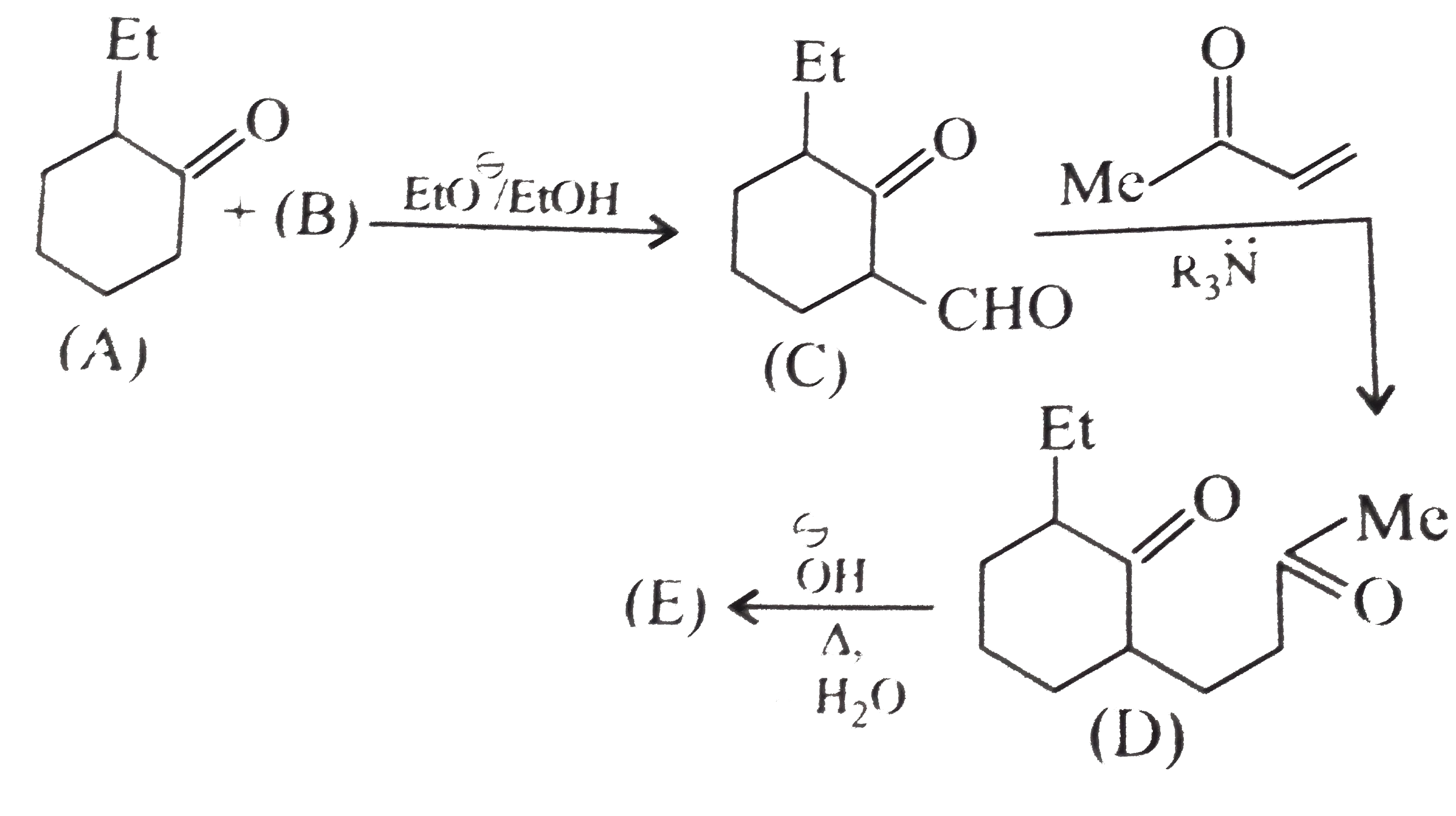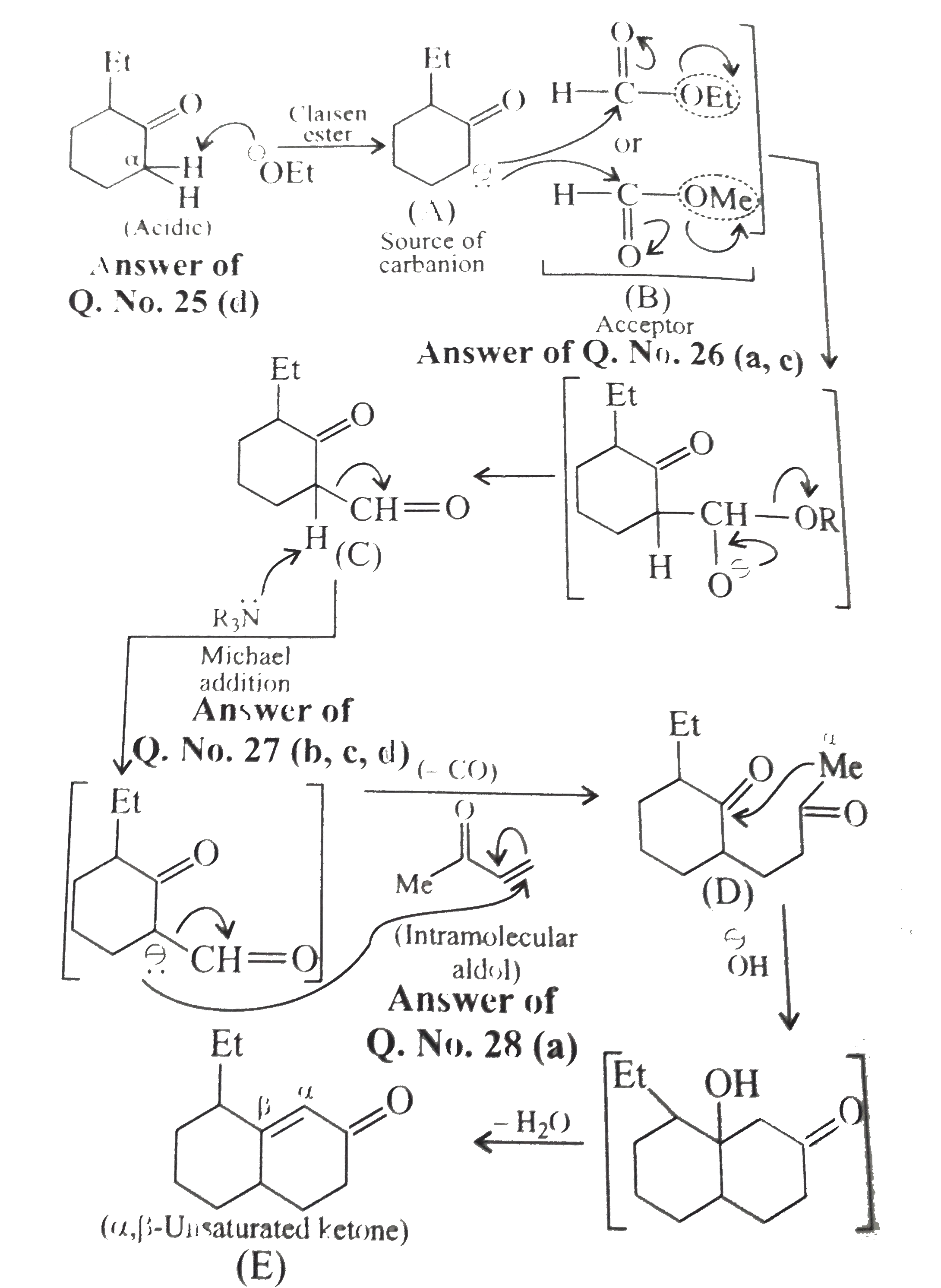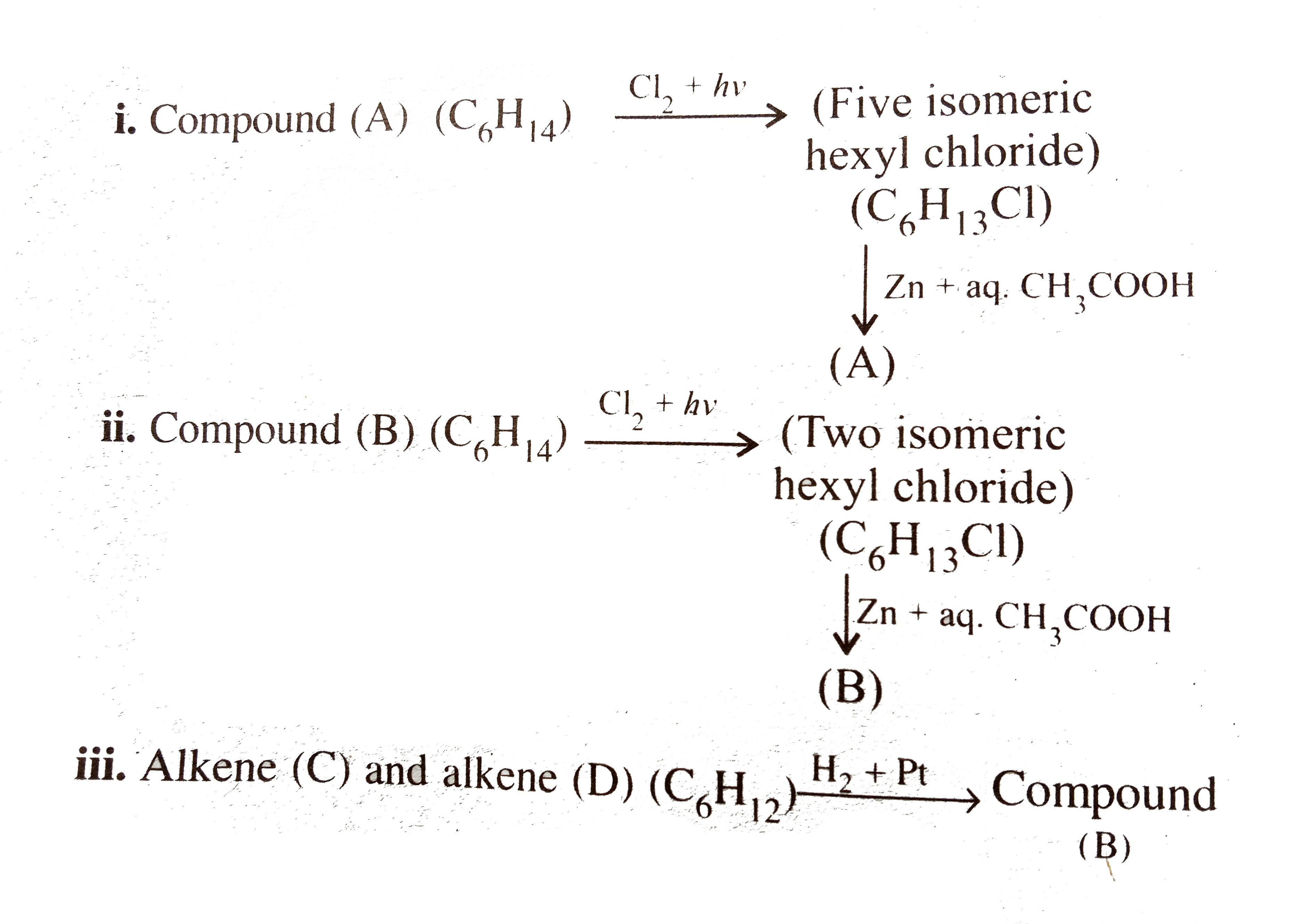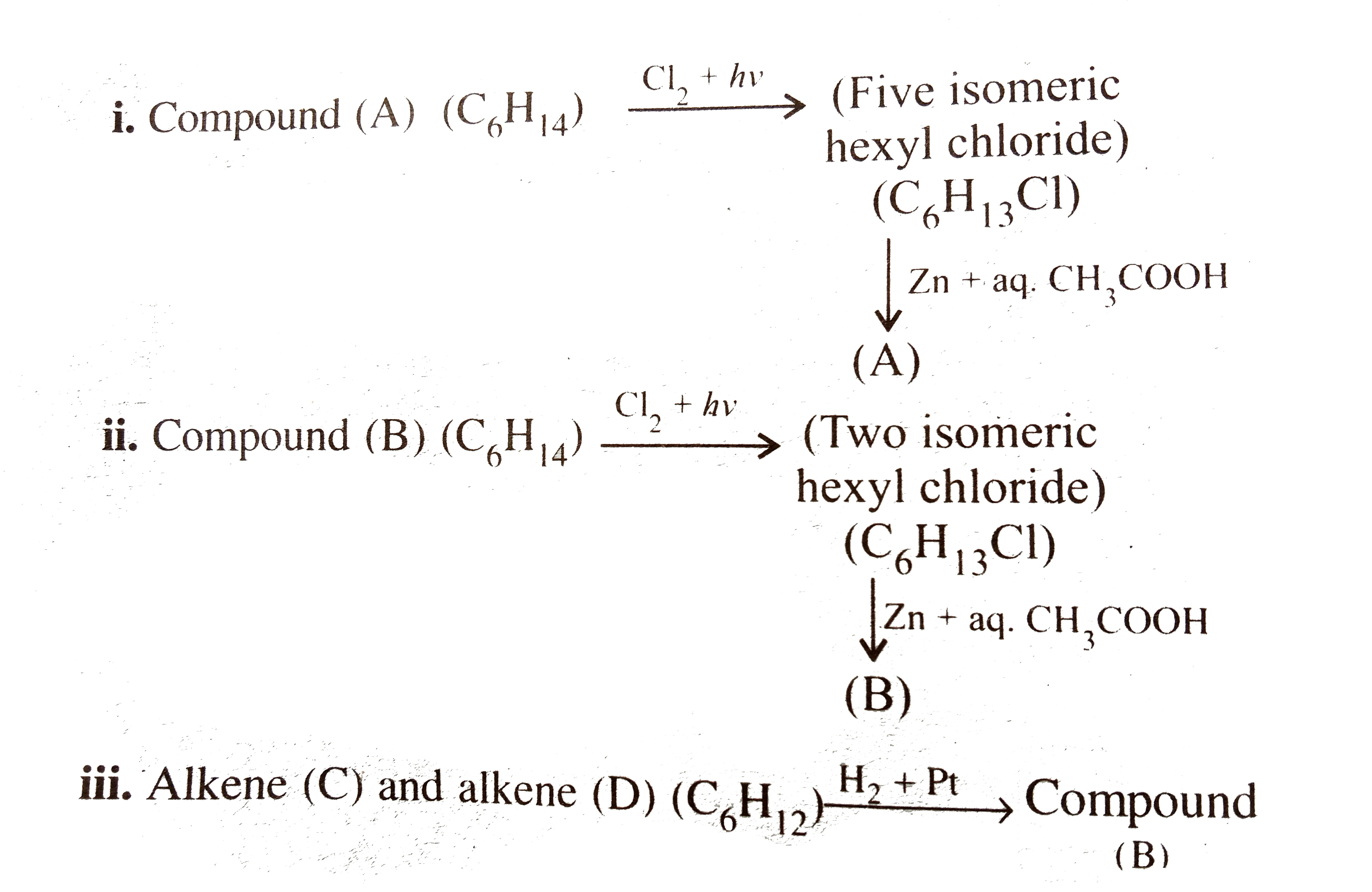
Compound (B) is :
CH2=O
HCOOMe
HCOOEt
Both (a) and ( c)
The correct Answer is:D
(d)  .
.
Topper's Solved these Questions
- CARBOXYLIC ACIDS AND THEIR DERIVATIVESBOOK - CENGAGE CHEMISTRY ENGLISHCHAPTER - CARBOXYLIC ACIDS AND THEIR DERIVATIVESEXERCISE - Exercises (Multiple Correct)
34 Videos
- CARBOXYLIC ACIDS AND THEIR DERIVATIVESBOOK - CENGAGE CHEMISTRY ENGLISHCHAPTER - CARBOXYLIC ACIDS AND THEIR DERIVATIVESEXERCISE - Exercises (Singlecorrect)
64 Videos
- CARBOXYLIC ACIDS AND THEIR DERIVATIVESBOOK - CENGAGE CHEMISTRY ENGLISHCHAPTER - CARBOXYLIC ACIDS AND THEIR DERIVATIVESEXERCISE - Exercises (Subjective)
19 Videos
- BIOMOLECULESBOOK - CENGAGE CHEMISTRY ENGLISHCHAPTER - BIOMOLECULESEXERCISE - Exercises Archives (Analytical And Descriptive)
8 Videos
- CHEMICAL KINETICSBOOK - CENGAGE CHEMISTRY ENGLISHCHAPTER - CHEMICAL KINETICSEXERCISE - Archives Subjective
23 Videos
Similar Questions
Knowledge Check

Find structure of compound B :A B
B C
C D
D
The correct structure for compound B will be :
 A
A B
B C
C D
D
Reduction of hexose A (molecular formula C6H12O6) with sodium borohydride gives compound B and C. Compound B is optically inactive, whereas compound C is optically active. Which of the following is compound A?
View Solution
What is compound (B) and how is it formed ?
View SolutionA compound (A) is formed by the reaction of ethylene with bromine which on reacting with aqueous KOH gives a compound (B). The compound (B) can also be prepared by the reaction of ethylene with the following:
View SolutionThe compound (A) in the previous question is further hydrolysed in dilute acidic medium to give compounds (B) and (C). The compounds (B) and (C) are :
View Solution
Compounds (B) and (C) are :
View Solution
Compounds (B) and (C) are:
View Solution


